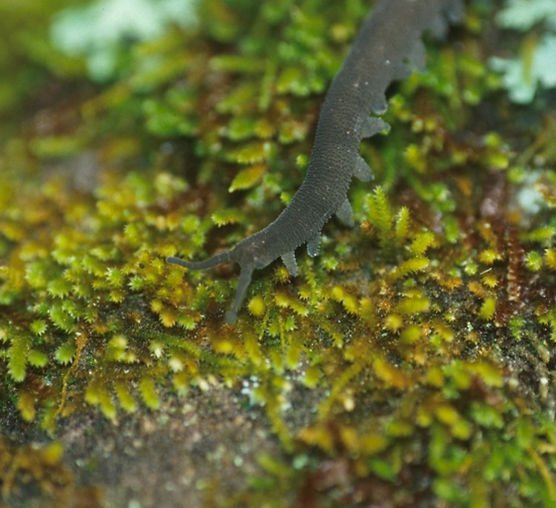
Have you ever heard of velvet worms? These fascinating creatures might not be on your daily radar, but they lead some pretty intriguing lives, especially when it comes to survival. Think of them as the survivalists of the animal kingdom, equipped with unique skills to ride out challenges in their environment. Now, imagine the challenges they face during tropical storms—heavy rain, strong winds, and the threat of flooding. How do these little critters manage to stay alive when nature puts on its wildest performance? Let’s dive in and explore the incredible survival strategies of velvet worms.
Velvet worms, or Onychophorans, are soft-bodied, segmented creatures that often dwell in damp, tropical forests. They have a somewhat alien appearance, with a velvety texture (hence the name!) and short, stubby legs. Although they may look adorable in a strange way, their survival tactics are anything but cute. In a world where storms can wreak havoc, these worms have developed clever ways to cope. So, what can we learn from them? Let’s unravel the mysteries of their survival against tropical storms.
What Are Velvet Worms?
Before we jump into their storm survival strategies, let’s get to know velvet worms better. These creatures are often mistaken for insects but are more closely related to slugs and snails. They typically range from 1 to 15 centimeters long and are found in humid environments where the air is rich in moisture. Their bodies are covered in tiny, hair-like structures that help them sense their surroundings.
One of their most remarkable features is their unique method of hunting. Velvet worms produce a sticky, slime-like substance that they shoot at their prey. Imagine a tiny superhero with a web-slinging ability! This slime immobilizes unsuspecting insects, making it easier for the velvet worm to chow down. This impressive hunting technique plays a crucial role in their survival, especially during harsh weather conditions.
Why Tropical Storms Are a Challenge
Tropical storms can be disastrous for many creatures, including velvet worms. With strong winds, torrential rain, and rising water levels, their habitats can quickly become inhospitable. In fact, many animals simply can’t handle such extreme changes in their environment. So why are tropical storms particularly challenging for these little guys?
Firstly, too much rain can lead to flooding, which can wash away entire populations of velvet worms. Secondly, strong winds can disturb their moist habitats, making it harder for them to find food and shelter. And lastly, if temperatures drop after a storm, these creatures, which thrive in humid warmth, may struggle to survive. With all these challenges, you might wonder how they manage to pull through.
Burrowing Behavior: A Smart Shelter
One of the velvet worm’s standout survival strategies is its burrowing behavior. When a storm approaches, these creatures tend to retreat to their underground hideouts. Think of it like how we might head to our basements during a thunderstorm!
Burrows provide a safe haven from relentless rain and wind. The ground acts as a shield, protecting the worms from the elements while keeping the humidity levels just right. These burrows can be quite small, just enough for them to curl up and ride out the storm in peace. Honestly, it’s a clever way to avoid the worst of Mother Nature’s wrath.
Moisture Management: Staying Hydrated
During a tropical storm, moisture levels can become unpredictable. Too much water might drown velvet worms, but a lack of moisture can dry them out. So, how do they strike a balance? These worms have an incredible ability to absorb water through their skin. Their velvety texture helps them retain moisture, acting like a natural sponge.
When storms hit, velvet worms often come out of their burrows, soaking up the rainwater without getting flooded. This strategy allows them to hydrate while still being cautious. They seem to understand when to take risks and when to stay safe—a skill that many animals struggle to master!
Adaptation to Habitat Changes
Another way velvet worms survive tropical storms is through their remarkable ability to adapt to changes in their habitat. After a storm passes, the environment can change drastically. Some areas might be damaged or altered, while others become new opportunities for survival.
These adaptable creatures can quickly change their hunting and burrowing strategies based on the new conditions they face. For instance, they might seek out new types of food that become available post-storm or explore different areas that are now less crowded or more humid. This flexibility is crucial; it’s what helps them thrive in an ever-changing world.
Predation and Survival: A Balancing Act
Of course, it’s not all about storms and survival. Velvet worms face various predators, including birds and reptiles, which can complicate their efforts to find safety. You might be wondering how these soft-bodied creatures protect themselves against such threats.
Interestingly, their slime isn’t just used for hunting; it’s also a defense mechanism. When threatened, velvet worms can shoot their sticky substance at predators, which can immobilize or deter them long enough for the worm to escape. This dual-purpose slime is just another example of how ingenious they are when it comes to survival.
Lessons We Can Learn from Velvet Worms
So, what can we take away from the survival strategies of velvet worms? Honestly, these tiny creatures remind us of the importance of adaptability and resilience. Whether it’s facing storms in nature or challenges in our own lives, there’s a lot we can learn from how velvet worms navigate adversity.
Incorporating their strategies—like seeking shelter during tough times and being open to change—can help us handle our own storms in life. Plus, their remarkable ability to hydrate and find food in changing environments is a fantastic reminder to be resourceful and think creatively.
Velvet worms might not be on everyone’s radar, but their survival tactics during tropical storms are truly impressive. By burrowing, managing moisture, adapting to habitat changes, and using clever defense mechanisms, they demonstrate the art of survival in a challenging world. The next time you face a storm—whether it’s literal or metaphorical—remember the velvet worm. It’s a small but mighty reminder that resilience and adaptability can help us weather any storm.

